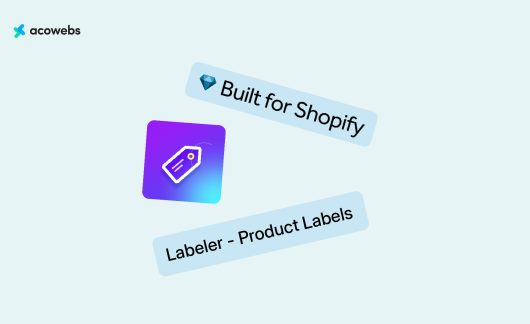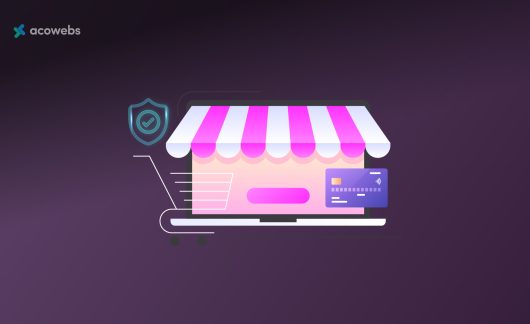ECommerce customer surveys help you gather valuable and reliable insights from product and service users.
The insights enable you to make the right decisions to strengthen your product development, operations, and customer journey.
Happy and successful clients are a source of referrals, repeat sales, and consistent revenues, but to understand what makes your customers happy, what pushes some away, and what you can do better requires you to collect and analyze reliable user feedback.
Your customers will tell you your areas of strengths and weaknesses across your eCommerce processes.
The feedback and experience data can help create a huge difference in your business operations as the survey results provide actionable insights.
An analysis of the data collected will tell you what and where you need to improve or do better.
In this article, you will learn all about eCommerce customer surveys to enable you to make decisions with a positive impact on the customer experience and overall business performance.
Customer Satisfaction Survey : What is it?
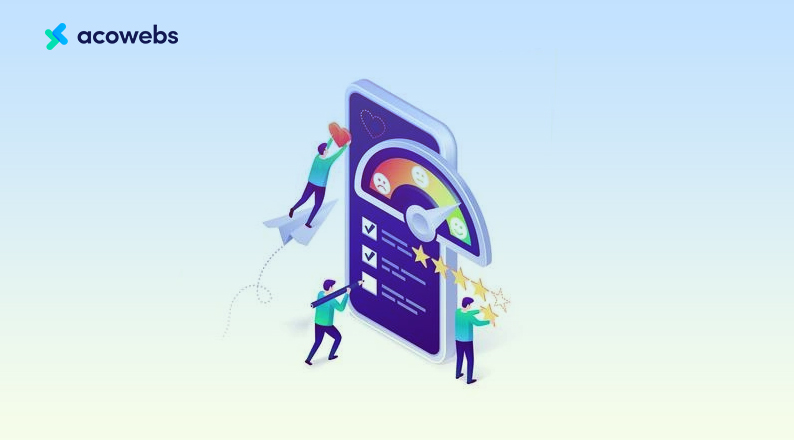
A client satisfaction survey is a set of questions that businesses use to assess and analyze what their clients think or feel about their brand, products and services, and customer support.
Insights obtained from customer satisfaction surveys help eCommerce businesses to make strategic enhancements to their products, optimize the overall user experience of the website or app, and to deliver as per the needs of the market.
In addition to addressing micro-level customer experiences, you can use surveys to understand where the market is going, how your product is positioned to perform against the competition, and where you need to iterate and improve.
You cannot obtain such relevant and valuable information from web/store analytics, email marketing, and social media pages, yet surveys provide you with a pool of unlimited insights unique to your business.
Surveys are also beneficial to your business because they allow you to learn how to:
- Improve your product and service offering.
- Develop new products and services that meet customers’ needs.
- Maintain customer retention and build brand loyalty.
- Identify loyal brand ambassadors (promoters).
- Identify trends.
- Enhance areas of strength and competitive advantages.
Before conducting your survey, you need to have an understanding of the different ways you can use to understand your customers better.
Let’s have a look at the four most effective types of surveys that can be used in your eCommerce business.
ALSO READ: Top 8 Social Media Strategies That Every E-commerce Store Needs To Implement
4 types of customer satisfaction surveys
Customer Satisfaction Score (CSAT) Surveys
CSAT surveys help you understand how much your customers are satisfied or happy with your company’s products, services, and experiences.
You can use this type of survey to gauge the needs of your customers, understand problems with your products and surveys, or even segment customers according to the scores.
Many CSAT surveys use a rating scale to assess changes in customer satisfaction over time while helping you gain a deeper understanding of whether or not your product and service offering is meeting customers’ expectations.
Responses from a rating scale are quantifiable or abstract because they are in the form of a multiple-choice, such as. 1-5, 1-20, satisfied, not satisfied, etc.
Some of the questions you can ask your customers to collect feedback include:
- How would you rate your overall satisfaction with the quality of service you received – between 1-10, with 10 being “highly satisfied” and 1 being “highly dissatisfied”.
- Were our product/service able to meet your expectations? – provide a score.
Use the following formula to calculate CSAT scores:
Number of satisfied customers (4 satisfied and 5 very satisfied) / Number of survey responses * 100
If the results obtained from your CSAT survey show a low score below 90% or a sudden negative change, you must address the issue as soon as possible.
You can also use the American Customer Service Index (ACSI), which is a benchmark for scores across brands, industries, and companies.
Survey based on Net Promoter Score (NPS)
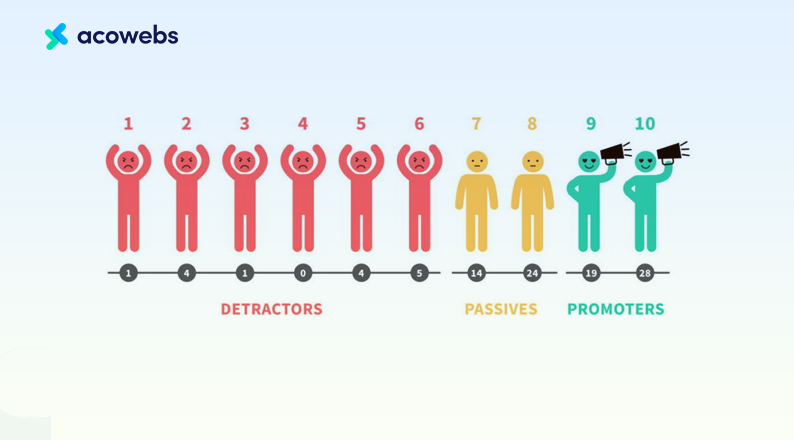
NPS is a quick survey developed in 2003 by Bain and Company. Businesses use it to measure and monitor how their customers perceive them.
NPS asks clients about their likelihood to recommend your company or service or product to a colleague or friend. It is a show of affinity towards your brand.
The Net Promoter Score is measured on a Likert scale of 0 to 10, after which you can compare the number of your promoters (9-10 answers), passives (7-8 answers), and detractors (0-6 answers) to understand how your company is performing.
A sample NPS survey question is:
- How likely are you to recommend our services [or brand] to a friend or colleague on a scale of 1-10?
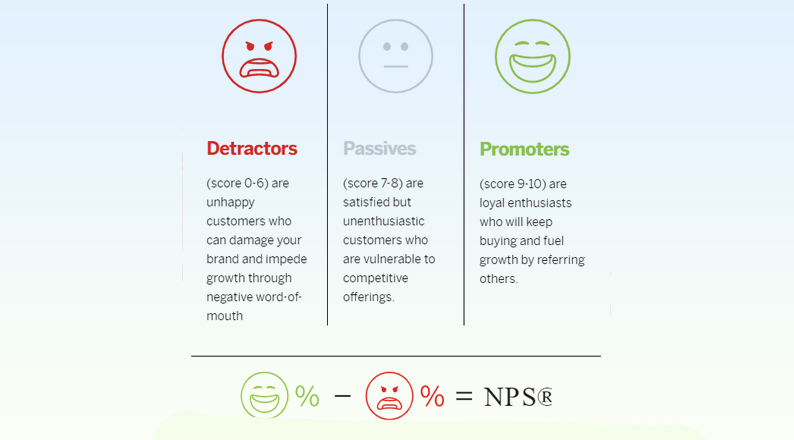
The higher the NPS score, the better because it is an indication that you have more promoters who can refer your products and services to others.
ALSO READ: How eCommerce businesses can turn organic traffic into valuable leads
Survey based on Customer Effort Score (CES)
This customer satisfaction metric aims to assess the effort it requires for your customers to use your service or product, or get a problem resolved through your customer support center.
You can schedule automated CES surveys immediately after the closure of a support ticket or at the end of inbound calls.
An example of a CES survey question is: “How easy it was getting assistance for your query today?”.
You can then provide customers with a 5-point scale having options like “very difficult,” “somewhat easy,” “very easy,” etc.
Milestone Surveys
You can send milestone surveys in the form of questionnaires at every key moment in the customer journey. The goal of these surveys is to evaluate and help you understand the customer experience better.
For instance, you can send time-based milestone surveys 30 days after signing up or after the delivery of a product or service.
You can also send experience-based surveys upon completion of a given process or stage, such as an onboarding process or a training module.
Now that you have an idea of the type of customer satisfaction surveys you can conduct, let’s have a look at the major steps for creating the surveys.
6 steps to conduct efficient eCommerce customer surveys
Plan your survey

To conduct a successful customer satisfaction survey, you must have a clear goal or purpose, which is well defined in ways that customers will be motivated to provide honest feedback.
Note down your business objectives before starting the survey. Ask yourself,
- Is it to collect feedback to improve your products or services?
- Is it to know your customers better?
- Is it to offer a better customer experience?
Depending on your eCommerce customer survey goals, consider every question format, such as multiple options, yes or no, agree or disagree, and open-ended.
It is good to mix the question formats to get reliable and insightful responses.
The next step is to note down your survey recipients or a target audience, who could be new customers, customers who have completed a purchase or a given milestone, etc.
Remember to keep your audience sizable to avoid sending surveys to too many participants, which could lead to time and resource wastage.
The more precise and reasonable your target audience, the better the accuracy and usefulness of the survey results.
You should also consider how your survey participants will be reached or contacted, such as on your homepage or via email.
Still, you should be aware that using on-site or on-page pop-ups can be a bit disruptive though if well implemented, you can use them to collect feedback on a recently redesigned page or to discover what potential customers would want you to offer.
A more effective way of conducting feedback surveys is to send post-purchase emails after the delivery of an order.
Prom.ua, an online trader in consumer, industrial, and wholesale products, sends post-purchase surveys that encourage customers to leave feedback on how they felt about the company’s services.
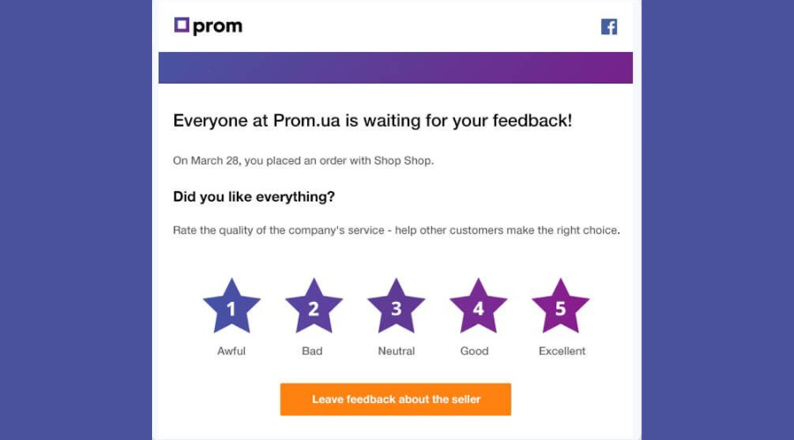
Ensure that your surveys reach your target audience at the right time.
For instance, a post-purchase survey should be delivered after the order has been delivered successfully because the customer will have experienced the quality of service by that time.
If the goal of your survey is to gather insights about your customer support, it is reasonable to send such a survey after the resolution of a given query, not earlier.
ALSO READ: Ways to reduce your eCommerce operating costs
Ensure accessibility
Once you have a plan of action in place, ensure to test the survey’s accessibility. Check to ensure that the survey page loads or the questions are well displayed on the third-party tool.
You should also test accessibility and display on mobile devices. A mobile-friendly survey should not include images and unnecessary styling that can make it hard for the page to load fast.
Complex elements can also be difficult to click or access with fingers.
Additionally, both the questions and responses on the mobile should fit the screen, and a part of that requires minimal use of open-ended questions because typing responses on mobile can be challenging and time-consuming.
Ask short, clear, simple questions
Effective eCommerce customer surveys contain short and straightforward questions that go directly to the point.
The questions should be easy to understand and interpret, enabling customers to provide clear and reliable answers.
According to research by Nielsen, 79% of web users scan web pages, while only 16% read content word-for-word.
This finding shows how important it is to keep your surveys scannable through the use of keywords and words that are easy to understand (no jargon or complex terms and sentences).
You should also limit the number of questions because many customers will complete a short survey, while long ones are likely to be submitted incomplete.
Long surveys are also counterproductive because while some customers might complete them, the responses are likely to be rushed with respondents throwing in any answer just to finish quickly.
A clear, specific objective, such as to measure the checkout experience, will help you design short and simple survey questions.
Here are examples of relevant and to-the-point questions to ask:
- How would you rate your experience with us?
- How easy is it to navigate our website?
- How likely are you to buy again from us?
Select the right response scale
The three main types of response scales include:
Dichotomous response scales
Dichotomous response scales present participants with two choices – yes/no, true/false, or agree/disagree.
The questions appear simple, but the responses will be clear enough in order to inform you of the customer experience and the best action to take.
Rating response scales
Rating response scales, such as a Likert scale, are point-based, enabling your eCommerce survey participants to select how they feel about your brand or product.
These types of scales vary in size, but the most popular ones are 1-3, 1-5, and 1-10.
The questions should match the ends of the scale to opposite responses, such as “Always – Never,” “Very Satisfied – Very Dissatisfied,” “Extremely – Not at All,” and “Above Average – Very Poor”.
Semantic differential response scales
These scales measure your customers’ attitudes by using terms that represent different opinions along a scale.
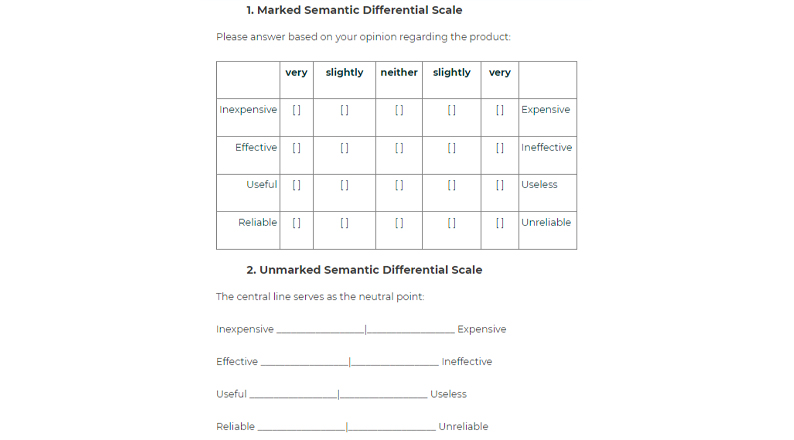
The type of scale to use depends on the type of data you want to collect, which is driven by your eCommerce customer survey goals.
There are still questions that might be measurable using these scales, and you may need to diversify according to your needs.
For instance, responses to non-measured questions like “Which is your favorite store location?” are best submitted through a multiple-choice list.
ALSO READ: A complete guide to BOPIS (buy online pick up in-store)
Implement the survey and evaluate the responses
By now, you have a set of specific questions to ask, a primary channel to use, and a rating scale to collect and measure the responses.
The channel chosen for the survey implementation will depend on the goal of your survey or the type of insights you are looking to gather.
Once the survey cycle is finished, feed the responses into a database, calculate the necessary metrics, such as CSAT or NPS, and prepare a visual representation of the results.
The visual data can be in the form of tables or charts with colors indicating the strength of the responses.
This evaluation process will provide you with insights into how customers feel about your brand or product, where you are doing well, and areas in need of improvements.
You can also consider implementing some of the suggestions provided in the open-ended questionnaires for a better customer experience.
As you close the feedback loop, always remember to thank your survey respondents for taking part in the exercises to make them feel that their feedback is valuable and you are paying attention to their views.
Ask for a follow up session
Good eCommerce customer survey practice requires that you go above and beyond to gather more qualitative information.
Since most of the questions asked will provide you with easy-to-answer close-ended questions and quantitative responses, you should go the extra mile to reach out to some of the participants upon receipt of the survey results.
For instance, if you asked customers to rate their experience with navigating your web page and their response was “very poor,” chances are that you provided a window where they can provide more details about their experience.
However, very few survey participants will spend time providing the requested details.
Once you receive the responses, you can contact some of the respondents to get more valuable information or ideas, to address issues raised by detractors.
At the end of the survey, add a final question, “Would you be interested in answering additional questions on the phone?”
ALSO READ: E-Commerce Buyer Persona: A Complete Guide
What to avoid in an eCommerce customer survey
Biases

Bias can arise due to your manner of questioning, such as the use of leading questions.
Rather than ask, “How comfortable was your recent trip?,” ask, “How did you find your recent trip?”.
The former implies that the customer already found the trip comfortable, making it challenging for them to provide an honest answer. The latter gives room for the customer to indicate whether they enjoyed the trip or not.
You can avoid bias by providing randomized answer options to minimize the tendency of the survey respondents to pick the first reasonable choice from the list.
You should also avoid unnecessary form styling, such as layouts, colors, images, and fonts, as graphical representations can mean different things to different people.
Such elements can cause varying emotional effects on the respondents, disrupting your data.
Ensure to arrange your customers in a logical manner, starting with how they feel about your store to their browsing history, and you can finalize with questions about your products or the checkout process.
This sequence puts the customer in the same frame of mind as when they are shopping.
Confirmation bias is also a common phenomenon when conducting eCommerce surveys.
It is associated with people’s tendency to favor information that aligns with their existing preconceptions or beliefs while ignoring or disregarding facts and data that tend to challenge them.
Control confirmation bias by avoiding questions that lead people towards what you want to be true.
Over-use of incentives
While incentives encourage your fans to follow you, subscribe to your newsletter, or even shop more, they can have a desirable effect on your eCommerce customer surveys.
Some customers might provide answers only because there is a reward, without being honest about their experience. Others might answer in a hurry or even leave out some questions just to complete the survey quickly.
Motivation is still key to encouraging customers to interact with your brand and provide reviews and feedback, but you should test and monitor the performance of surveys with incentives and those without to gauge the effectiveness of the method used.
You can also include incentives depending on the consumption habits of your target customers.
Sample survey questions
Retention survey
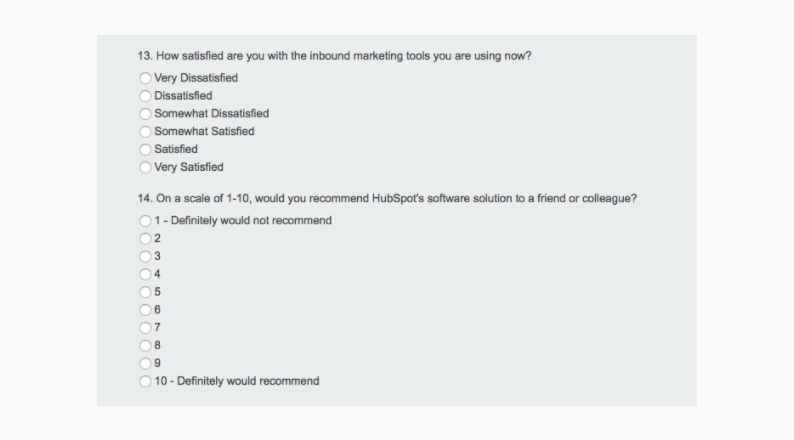
Customer effort score (CES) survey for product use
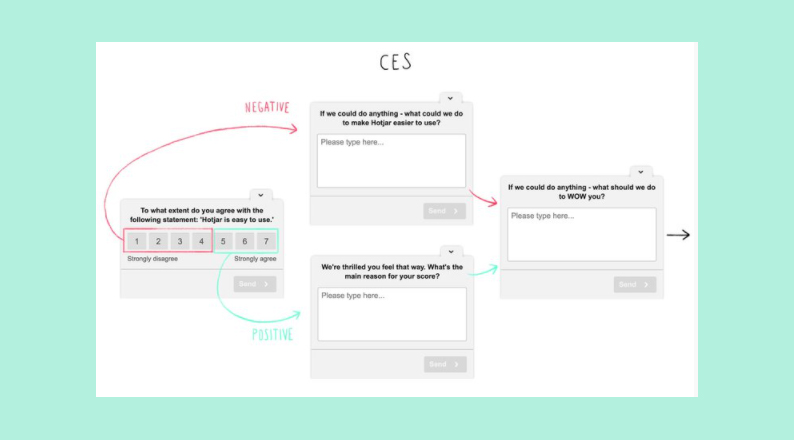
Post-purchase survey
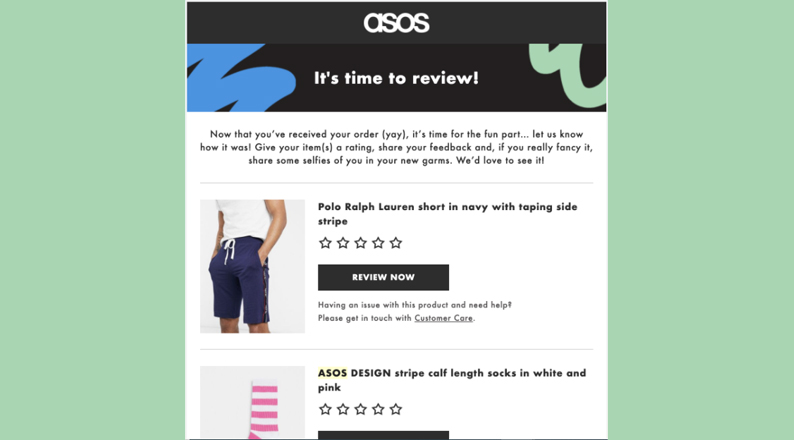
Tools to help you conduct your survey
Use one of these tools to create effective, well-designed, customer-focused surveys:
- SurveyMonkey
- Google Forms
- Qualtrics
- Optimonk
- Gravity Forms (WordPress)
Conclusion
ECommerce customer surveys are a set of questions that businesses use to assess and analyze what their customers think or feel about their brand, products and services, and customer support.
Insights obtained from customer satisfaction surveys can help you make strategic enhancements to your products, optimize the user experience, and deliver new market needs.
Surveys are good for customer retention and loyalty, brand promotion, and competitive advantages.
You can conduct a successful eCommerce customer survey by planning the survey, making it accessible, creating clear and concise questions, choosing the right response scale, and implementing and evaluating the results.
At the end of the survey questions, request customers for a follow-up session, and remember to use incentives carefully and avoid biases.
Acowebs are developers of Woocommerce bulk discounts that will help you add bulk discounts to products on your stores. It also has developed various other plugins like the popular plugin for managing the checkout form fields in WooCommerce, called Woocommerce Checkout Manager, which is highly feature-oriented yet lightweight and fast. There is also a free version of this plugin available in the WordPress directory named WooCommerce Checkout Field Editor.












 Login
Login
 Cart
Cart






